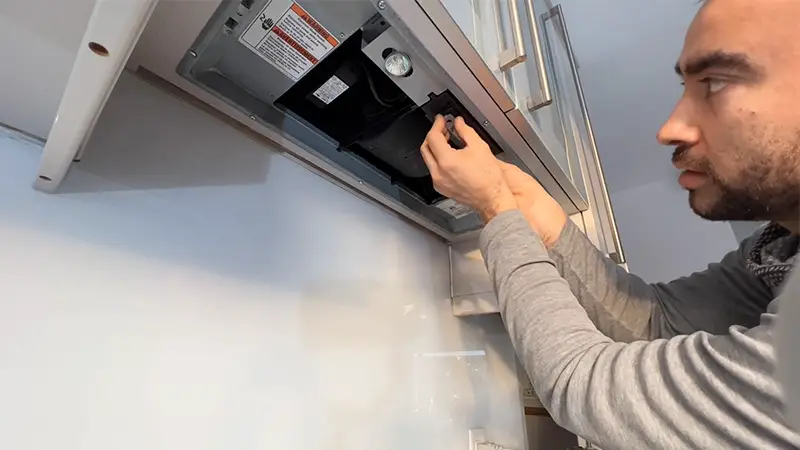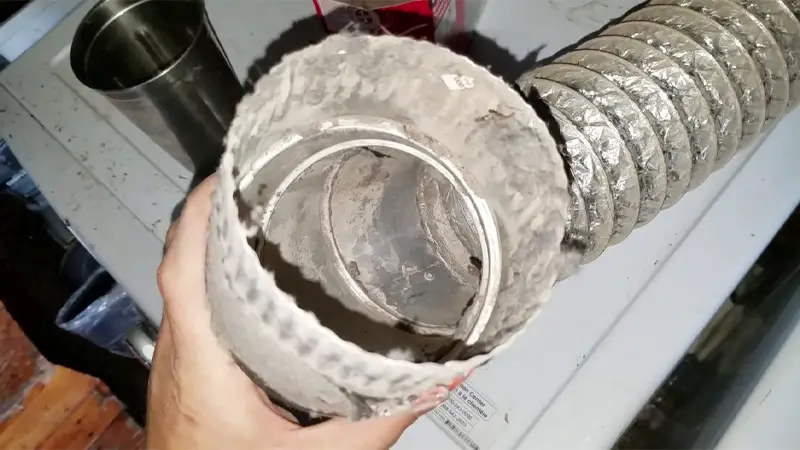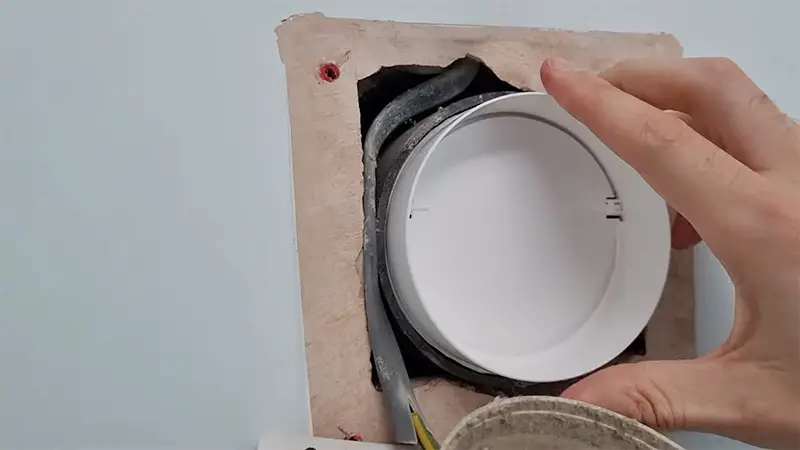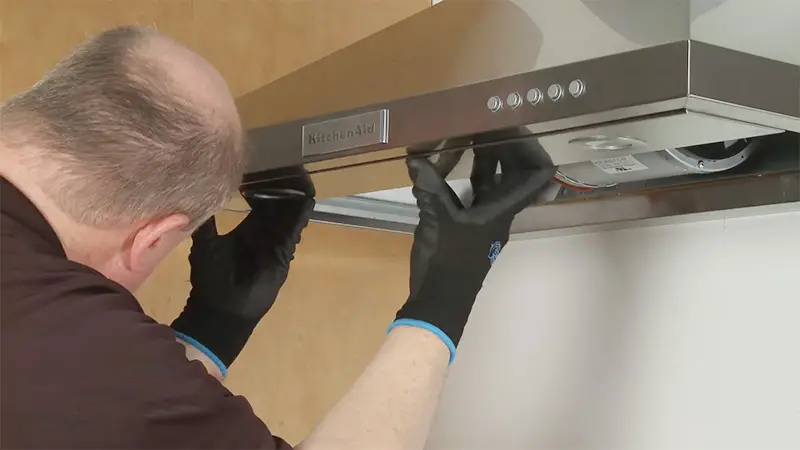There’s nothing quite like a cozy home on a cold day, but what if your range vent hood is making it feel colder instead of warmer?
If you’ve noticed that your kitchen is feeling drafty and there’s cold air coming from your range vent hood, it can be a frustrating problem to deal with.
Not only can it make cooking uncomfortable, but it can also increase your energy bills by causing your heating system to work harder than necessary.
In this article, we’ll explore some of the common causes of a range vent hood leaking cold air and provide you with some practical solutions to help you fix it and keep your kitchen warm and comfortable.
Understanding Why Range Vent Hood Leaks Cold Air & Troubleshooting Tips

When installed properly, two metal dampers prevent outside air from entering a range hood. The first is at the top, where it connects to the duct, while the second is at the wall or roof cap, where the duct exhausts.
When the fan is spinning low, these thin metal flaps don’t form airtight seals, but they should keep the cold and hot drafts from entering your hood.
We will start by inspecting the dampers to ensure they are functioning correctly. The first thing you should do is to remove the outside cap.
The damper of the hood’s duct must have a spring holding it shut when the fan is off if the damper has a wall cap. Likewise, check whether the damper itself is bent or blocked from closing completely.
Alternatively, you could use a roof cap instead of a spring because of its horizontal orientation. Replace a cap if it’s not closing correctly in either case.
Take a closer look at the damper on the hood. This will require removing the section of duct connected to it. You’ll usually find a butterfly damper with two metal flaps pivoting on a horizontal bar.
If grease accumulates on the flaps, the bar, or its housing, the degreaser should capture most of it. Gently wipe them clean with a degreaser.
Afterwards, test that the damper opens freely and shuts entirely by turning the fan on and off. The flaps often fit without gaping when the fan is turned off when a small piece of foam is applied to the top.
Additionally, make sure that no duct screws interfere with flap movement. Occasionally, installers plant a few in the wrong place by accident.
Ensure that the damper is safe before connecting the duct to the hood. Replace the damper if it is damaged.
Install A Backdraft Damper

Depending on the vent layout on your range hood, you may need a backdraft damper to prevent cold air from entering. Using a spring-loaded damper is the most reliable. If you already have one, the backdraft damper may already be bent or damaged.
It is also essential to ensure that the damper is free of grease and grime. Smooth opening and closing are imperative. Your backdraft damper can be mounted in either of two places.
You can keep debris and small animals out of your vent cap with a damper a few feet away. If you are worried about back drafting, mount the damper a few feet away from the hood’s duct connection.
One backdraft damper is typically found on a range hood. The damper near the ductwork connection and the damper at the other end are on some hoods. There is no need for two dampers in most cases.
Unlike a standard damper without a spring, spring-loaded dampers are more reliable for keeping cold air out. By using the spring mechanism, small animals and harsh winds can’t be pushed open.
What To Do If You Already Have A Backdraft Damper?

This is what you can do if you already have a backdraft damper.
Make Sure Any Duct Screws Don’t Interfere With The Damper
If you installed a duct with screws at different points, you might have done so, depending on the installation.
Cold air can enter if these prevent the damper from opening. You need to tighten them, so they are flush with your ducts.
Adjusting the damper away from the duct screws may also be possible. Remove the screws and install them in a different location away from the backdraft damper if that doesn’t work.
There’s a possibility that the screws were placed incorrectly if you hired a contractor to install the duct.
They can assist in resolving the issue if you call them. You should check to see if the damper opens and closes properly after dealing with the screws.
Make Sure It Is Clean

Whenever you see heavy grease buildup, grab a kitchen degreaser and a towel and clean your damper. When your damper is covered with grease, it may be difficult to open and close properly, allowing cold air to enter your ductwork.
Remove the damper from the duct to simplify cleaning. Use your degreaser to clean your range hood filters as well. A dirty damper can cause your filters to get clogged and clogged repeatedly.
Check If It Is Bent Or Damaged
Ensure the damper works appropriately by checking it outside or in your attic. Check to see whether it’s bent or damaged.
It is usual for a surface to wear and tear over time. It may be necessary to replace your damper if the damper fails to open and close properly.
Ensure the wall or roof cap is intact when you’re outside. Check that it is properly secured to the duct and in good condition. Purchasing a replacement cap is suitable if your cap cracks or the threads are worn.
Can You Duct Tape A Range Hood?
Use aluminum tape rather than duct tape to seal your range hood vent. Compared to plastic ductwork, metal ductwork adheres much better to it.
In addition, the location of the duct leading to the outside of the range vent hood can increase or decrease cold air entry issues.
The absence of resistance to cold air naturally “falling” down ducts that connect directly to the outdoors practically invites cold air into the home.
A damper may need to be repaired or replaced if repairing or replacing the damper does not stop the problem, or the duct may need to be changed to a bend or drop down to the ground level to prevent cold air from entering.
Where Is The Damper On A Range Hood?
Within the ductwork of the range hood is a damper. Usually, it is located at the end of a duct or the end of an exterior wall. At the top of a range hood, some dampers are located.
What Does A Damper Do On A Range Hood?
Backdraft dampers prevent small debris or animals from entering a range hood duct. The insulation prevents cold air from entering the kitchen through the duct.
Is A Range Hood Damper Necessary?
Using a range hood damper keeps cold air from entering the vent of the range hood. Having less heat in your home saves you some money.
You do not need to clean out your ducts because it prevents debris and small animals from entering them.
How Do I Permanently Close Off A Downdraft Vent?
With the help of caulking glue, secure a wall or roof cap on top of the vent outlet. If you want to spray foam inside your duct, you can also do so.
Even with foam, the duct won’t always be sealed, so you’ll need to seal it. It’s also important to note that a different brand of spray foam may work better than another.
Problems
Although a small amount of cold air entering through the vent hood may seem insignificant, it can significantly affect heating costs.
Furthermore, if the flap or duct is allowing air in, it presents an opportunity for bugs or other pests to enter.
As a result of high winds, leaves, dust, and other debris may enter the vent, blocking the fan and reducing its life. Debris can even enter the kitchen and fall on the stove during periods of high winds.
Final Words
I hope this article on range hood ducts was helpful to you. Whenever your hood vents cold air into your kitchen, you should consider installing a backdraft damper.
Inspecting the damper if you feel cold air coming in, even with a damper, is important. The door must be able to open smoothly and close smoothly to keep cold air out.






